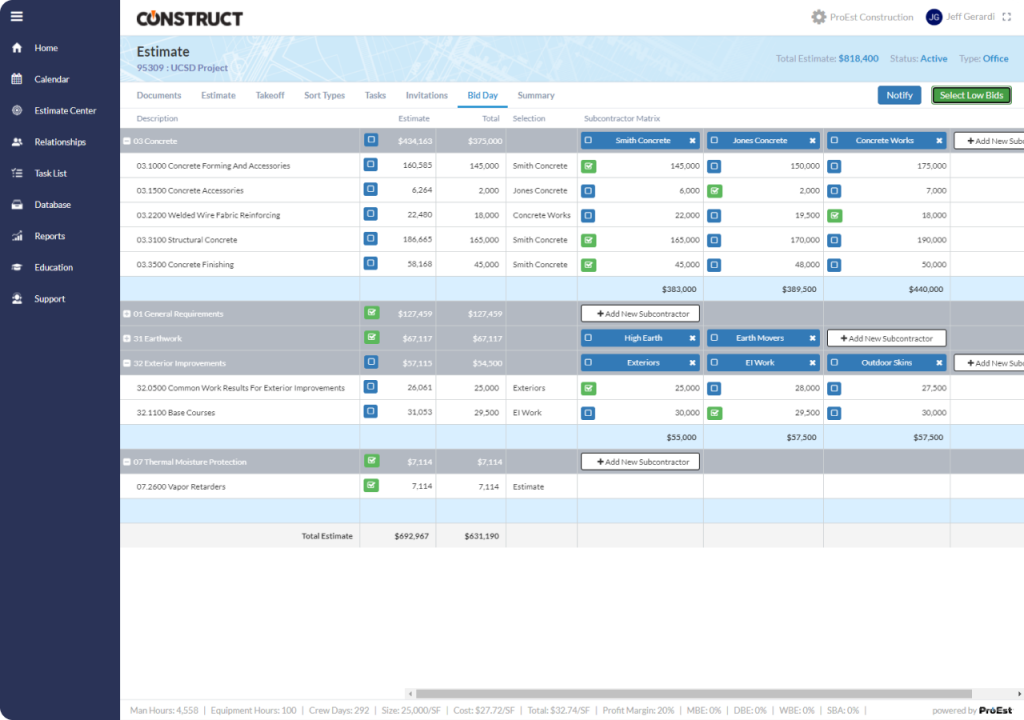The bidding process is hectic for clients as they must be on the lookout to ensure they are not paying a surplus beyond their needs.
For the bidders, the bidding process sometimes feels one-sided. They submit their bids but never hear back as their offers disappear from project managers’ hands. Many contractors and subcontractors then wonder what they ought to do to level their bids.
This article will discuss the process of bid leveling and its benefits in construction.

Table of Contents
What is bid leveling?
Bid leveling is the process of organizing project bids in an even package to make them easy for clients to understand. It also identifies discrepancies between the bids and examines each firm’s experience. This makes it simpler for clients to decide which company is best for the job.
Benefits of bid leveling
Bid leveling can save a great deal of money. Experience, attention to detail, and self-control are essential to get the best results. Here are some of the advantages of bid leveling:
- A better comparison: The costs are allocated appropriately per the bid sheet line items.
- Accuracy in bid amounts: Bid leveling also catches errors and omissions, ensuring that the client receives accurate bids.
- Savings on costs: Clients can, in turn, save on costs as their construction spending reduces up to 5% when using bid leveling.
How to level a construction bid
The bid leveling process allows you to break down a contractor’s services and offer you a clearer picture of the necessary assistance in your project.

1. Review project requirements
Review the project requirements first. Make sure all bids fulfill them. Ensure that the bids are bondable to the project. Do not consider a bid if it does not match the project’s needs, e.g., pre-cast concrete instead of reinforced concrete.
2. Identify similarities and differences
Identify the similarities and differences between the bids. Different bids may have different formats, but you can recognize similar work categories. Note any areas of divergence. If you need further information, contact the candidates to clarify specific costs.
3. Check the materials
The third step is looking for the necessary permits and materials. Don’t be put off by a contractor’s high prices; make sure you understand the price assumptions before making your decision.
4. Ensure the correct plans are used
Review the most recent document plans and addenda used by all bidders. Make notes on the drawings and proposals, including their approval dates. With this information, assess all estimates and select the best bid for your project.

Summary
Bid leveling helps a project owner choose the best bids. After the leveling process, the highest bid may be the lowest. This process helps identify the best bids when they come in higher than expected. It also affects whether a project is completed on time and within budget.

